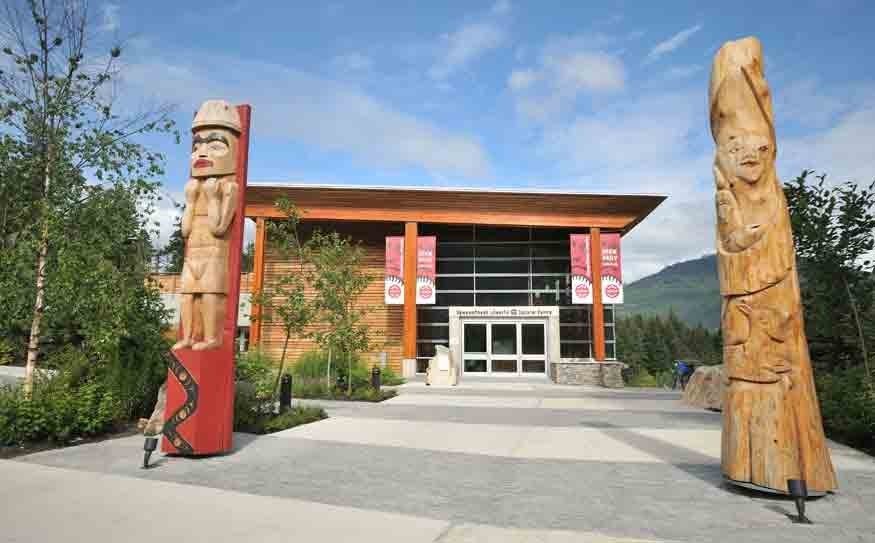Two Whistler organizations were the recent recipients of Heritage BC grants that will help expand Indigenous-led cultural and educational programming in the resort.
Whistler’s Indigenous museum, the Squamish Lil’wat Cultural Centre (SLCC), and the Whistler Community Services Society (WCSS) each received funds through Heritage BC’s $10-million 150 Time Immemorial Grant Program, which is intended to “raise cultural awareness, educate people about B.C.’s colonial past and its ongoing impacts, advance reconciliation and promote inclusivity and diversity as a foundational aspect of B.C.’s future,” the non-profit said in a release.
The SLCC was awarded $32,044 for its upcoming exhibition, Ancient Medicines-From Feast to Famine to Freedom, while Whistler’s social service provider received approximately $24,000 for training workshops that will educate participants on the respective history and culture of the local Squamish and Lil’wat First Nations. The curriculum will be developed and led by SLCC staff and Nation leaders.
“This was really a venture to educate individuals who arrive here and begin to work on these lands to understand where they are and where they should be getting their information and resources from: a place of cultural safety and connectedness, which is not always the case,” explained Jackie Dickinson, executive director of the WCSS.
The multi-hour sessions are intended to be offered year-round, and although the details are still to be ironed out, Dickinson said they will be designed with accessibility in mind.
“We want to make it accessible to everyone who comes to visit this area that wants to live, work and play and recognize the Nations’ land that they reside on,” she added.
The SLCC exhibit, slated to open June 21 for National Indigenous Peoples Day, details “the health journey of Indigenous people in Canada, but is really focused on the Squamish and Lil’wat Nations,” noted SLCC curator and Lil’wat Nation member Mixalhítsa7 Alison Pascal.
The exhibit grew out of the SLCC’s popular tea tours, which introduce guests to a number of local plants and ingredients with inherent medicinal benefits. Unlike Western medicine and its reliance on a cause-and-effect model to treat specific symptoms as they arise, traditional Indigenous medicine tends to take a more preventative, holistic approach that leans on the concept of the medicine wheel, which represents the interconnectivity of all aspects of one’s being—including the connection to the natural world.
The exhibit led Pascal and her team to further research the obliterating impacts of Canada’s residential school system on Indigenous people’s health and way of life.
“They went from that really healthy lifestyle to a system where they were pretty much starving from the ages of six to 16,” Pascal said. “So I started to research what the effects of long-term famine were. And really, it's everything that you’d [expect]: height stunting, chronic illness like diabetes, stress-induced heart problems, strokes. Your thyroid gland is just thrown out of whack, especially when those children who had been living in residential school returned home. Their bodies were so used to being starving that when they did get food, all of that food was stored as fat. Their whole body systems were damaged—and it’s something that’s now hereditary.”
Heart disease rates for Indigenous Canadians are as much as 50 per cent higher than non-Indigenous Canadians. Age-standardized rates of Type 2 diabetes are 17 per cent for Indigenous Canadians living on-reserve and 10 per cent among those living off-reserve, compared to five per cent in the general population. Indigenous Canadians typically suffer higher percentages of mental health challenges as well, which have only worsened in the pandemic.
“So when you're looking at Indigenous people and why we're really looking to return to our traditional system, it's because, well, for me, one of the things is to balance out those inherited chronic disorders now,” Pascal said.
Originally titled “From Feast to Famine,” Pascal said the SLCC team decided to take a more uplifting approach to the exhibit in light of the heaviness of the past two years.
“We were hesitant to stay in this purely negative zone. We’re here, but we also want to focus on the uphill climb, the return to hope. So our exhibit when it opens will be ‘From Feast to Famine to Freedom.’ We're really wanting to take that whole arc, and give people resources and tools to help with their health journey.”
The WCSS received another $24,000 in funding recently, this time through the federal New Horizons grant stream, to expand on its senior-focused programming. That means the non-profit will build on its existing Activate and Connect monthly programming for ages 50 and up, as well as adding new programming.
To hear Dickinson tell it, the funding has been a long time coming.
“A lot of this programming stemmed way back to 2009 and 2010 when we were looking at the visions of [sustainability guiding document] Whistler 2020,” she said. “At the time, you had members of the Mature Action Community and elders within our community really strongly advocating for this vision of aging in place … where the funding for that came from and how to make that possible was an ongoing discussion for 12 years.”
Dickinson added that WCSS’ decision to apply for the grant was informed by the Whistler Community Foundation’s Vital Signs Cafes it ran over the past two years on the topic of aging in place.




.png;w=80;h=120;mode=crop)
